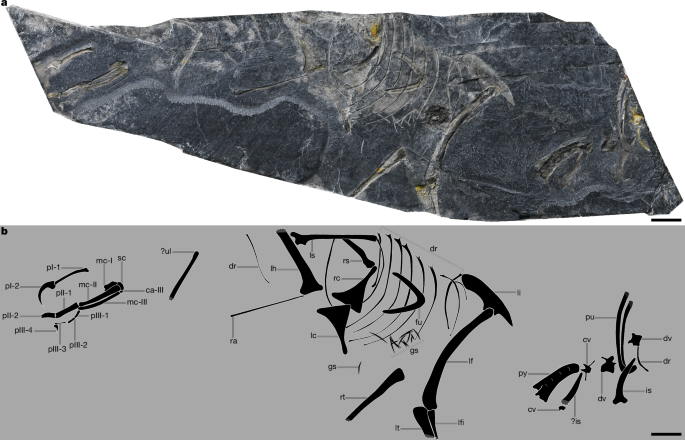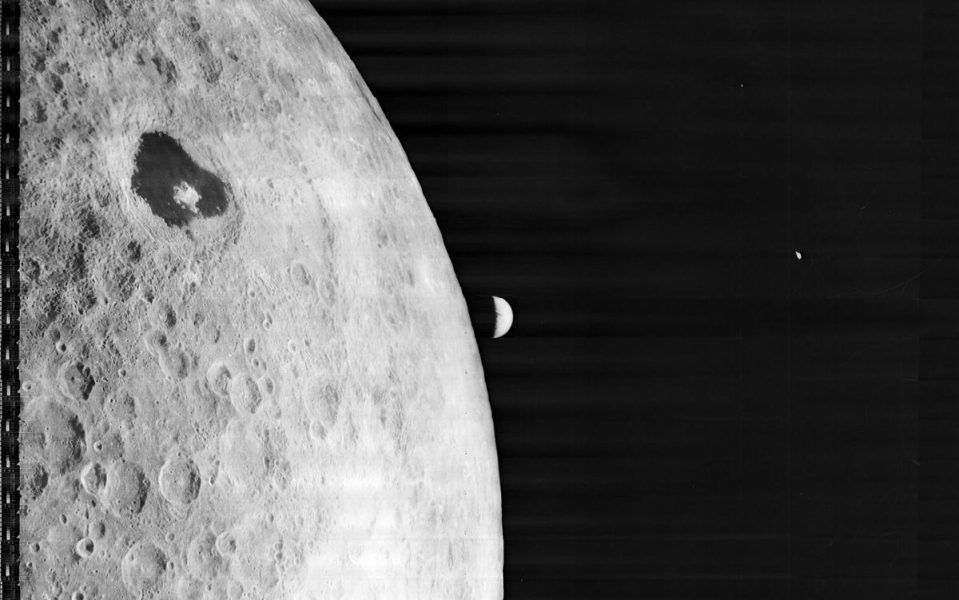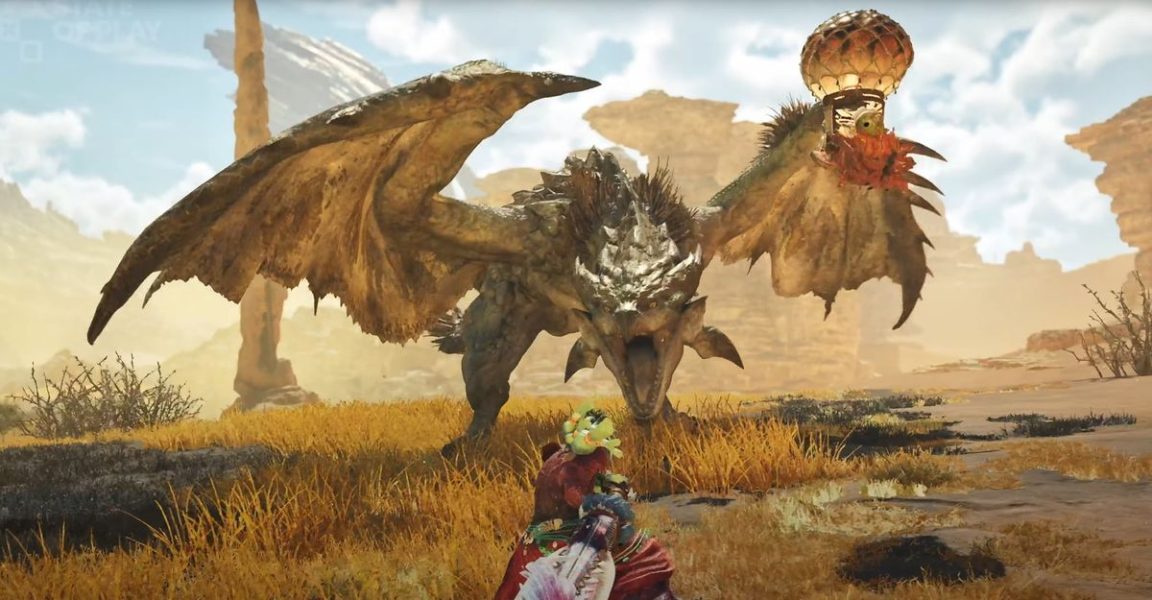Earliest short-tailed bird from the Late Jurassic of China – Nature.com

Thank you for visiting nature.com. You are using a browser version with limited support for CSS. To obtain
the best experience, we recommend you use a more up to date browser (or turn off compatibility mode in
Internet Explorer). In the meantime, to ensure continued support, we are displaying the site without styles
and JavaScript.Advertisement
Nature
volume 638, pages 441–448 (2025)Cite this article
485 Accesses533 AltmetricMetrics detailsRecent macroevolutionary studies predict a diversification of early birds during the Jurassic period1,2,3,4, but the unquestionable Jurassic bird fossil record is limited to Archaeopteryx1,5,6, which has also been referred to deinonychosaurian dinosaurs by some analyses7,8. Although they have feathered wings, the known Jurassic birds are more similar to non-avialan theropods in having the ancestral long reptilian tail9,10,11. This is in stark contrast to most Cretaceous and crownward taxa, which have a short tail that terminates in a compound bone called the pygostyle12,13,14. Here we report on the oldest short-tailed avialan, Baminornis zhenghensis gen. et sp. nov., from the recently discovered Late Jurassic Zhenghe Fauna15, which fills a noticeable spatio-temporal gap in the earliest branching avialan fossil record. B. zhenghensis exhibits a unique combination of derived ornithothoracine-like pectoral and pelvic girdles and plesiomorphic non-avialan maniraptoran hand, demonstrating mosaic evolution along stem avialan line. An avialan furcula collected from the same locality is referrable to ornithuromorphs on the basis of our morphometric and phylogenetic analyses. These newly discovered fossils demonstrate the early appearance of highly derived bird features, and together with an anchiornithine fossil from the same locality, they suggest an earlier origin of birds and a radiation of early birds in the Jurassic.This is a preview of subscription content, access via your institution
Access Nature and 54 other Nature Portfolio journals
Get Nature+, our best-value online-access subscription
24,99 € / 30 days
cancel any timeSubscribe to this journal
Receive 51 print issues and online access
We are sorry, but there is no personal subscription option available for your country.Buy this articlePrices may be subject to local taxes which are calculated during checkoutThe specimens (IVPP V33259 and V33260) described in this study are archived and available on request from the Institute of Vertebrate Paleontology and Paleoanthropology, Chinese Academy of Sciences, Beijing, China. All data, including the measurements, and phylogenetic matrix that support the findings of this research are included as Supplementary Information. Raw data used in phylogenetic and morphometric analyses are available at Figshare (https://doi.org/10.6084/m9.figshare.25918291)78. The Life Science Identifier for Baminornis zhenghensis is urn:lsid:zoobank.org:act:FE0EA078-DE38-4EAE-9517-8BFBA6288B0F.The MrBayes commands, R code, and raw data used in phylogenetic and morphometric analyses are available at Figshare (https://doi.org/10.6084/m9.figshare.25918291 (ref. 78)).Rauhut, O. W. M. & Foth, C. in The Evolution of Feathers: From Their Origin to the Present (eds Foth, C. & Rauhut, O. W. M.) 27–45 (Springer, 2020).Lloyd, G. T., Bapst, D. W., Friedman, M. & Davis, K. E. Probabilistic divergence time estimation without branch lengths: dating the origins of dinosaurs, avian flight and crown birds. Biol. Lett. 12, 20160609 (2016).Article
PubMed
PubMed Central
Google Scholar
Xu, X. et al. An integrative approach to understanding bird origins. Science 346, 1253293 (2014).Article
PubMed
Google Scholar
Benson, R. B. J. et al. Rates of dinosaur body mass evolution indicate 170 million years of sustained ecological innovation on the avian stem lineage. PLoS Biol. 12, e1001853 (2014).Article
PubMed
PubMed Central
Google Scholar
Foth, C., Tischlinger, H. & Rauhut, O. W. M. New specimen of Archaeopteryx provides insights into the evolution of pennaceous feathers. Nature 511, 79–82 (2014).Article
ADS
PubMed
Google Scholar
Brusatte, S. L., O’Connor, J. K. & Jarvis, E. D. The origin and diversification of birds. Curr. Biol. 25, R888–R898 (2015).Article
PubMed
Google Scholar
Xu, X., You, H., Du, K. & Han, F. An Archaeopteryx-like theropod from China and the origin of Avialae. Nature 475, 465–470 (2011).Article
PubMed
MATH
Google Scholar
Hu, D. et al. A bony-crested Jurassic dinosaur with evidence of iridescent plumage highlights complexity in early paravian evolution. Nat. Commun. 9, 217 (2018).Article
ADS
PubMed
PubMed Central
MATH
Google Scholar
Pei, R., Li, Q., Meng, Q., Norell, M. A. & Gao, K. New specimens of Anchiornis huxleyi (Theropoda: Paraves) from the Late Jurassic of northeastern China. Bull. Am. Mus. Nat. Hist. 411, 1–67 (2017).Article
Google Scholar
Rauhut, O. W., Foth, C. & Tischlinger, H. The oldest Archaeopteryx (Theropoda: Avialiae): a new specimen from the Kimmeridgian/Tithonian boundary of Schamhaupten, Bavaria. PeerJ 6, e4191 (2018).Article
PubMed
PubMed Central
Google Scholar
Godefroit, P. et al. A Jurassic avialan dinosaur from China resolves the early phylogenetic history of birds. Nature 498, 359–362 (2013).Article
ADS
PubMed
Google Scholar
Chiappe, L. M. & Meng, Q. Birds of Stone: Chinese Avian Fossils from the Age of Dinosaurs (Johns Hopkins Univ. Press, 2016).Gatesy, S. M. & Middleton, K. M. Bipedalism, flight, and the evolution of theropod locomotor diversity. J. Vertebr. Paleontol. 17, 308–329 (1997).Article
Google Scholar
Rashid, D. et al. From dinosaurs to birds: a tail of evolution. EvoDevo 5, 25 (2014).Article
PubMed
PubMed Central
MATH
Google Scholar
Xu, L. et al. A new avialan theropod from an emerging Jurassic terrestrial fauna. Nature 621, 336–343 (2023).Article
ADS
PubMed
MATH
Google Scholar
Brusatte, S. L., Lloyd, G. T., Wang, S. C. & Norell, M. A. Gradual assembly of avian body plan culminated in rapid rates of evolution across the dinosaur-bird transition. Curr. Biol. 24, 2386–2392 (2014).Article
PubMed
Google Scholar
O’Connor, J. K. et al. An enantiornithine with a fan-shaped tail, and the evolution of the rectricial complex in early birds. Curr. Biol. 26, 114–119 (2016).Article
PubMed
MATH
Google Scholar
Turner, A. H., Makovicky, P. J. & Norell, M. A. A review of dromaeosaurid systematics and paravian phylogeny. Bull. Am. Mus. Nat. Hist. 371, 1–206 (2012).Article
MATH
Google Scholar
Pittman, M. et al. The fossil record of Mesozoic and Paleocene pennaraptorans. Bull. Am. Mus. Nat. Hist. 440, 37–96 (2020).MATH
Google Scholar
Mayr, G., Pohl, B., Hartman, S. & Peters, D. S. The tenth skeletal specimen of Archaeopteryx. Zool. J. Linn. Soc. 149, 97–116 (2007).Article
MATH
Google Scholar
Wellnhofer, P. A short history of research on Archaeopteryx and its relationship with dinosaurs. Geol. Soc. Lond. Spec. 343, 237–250 (2010).Article
Google Scholar
Wang, M., O’Connor, J. K., Xu, X. & Zhou, Z. A new Jurassic scansoriopterygid and the loss of membranous wings in theropod dinosaurs. Nature 569, 256–259 (2019).Article
ADS
PubMed
Google Scholar
Zhang, F., Zhou, Z., Xu, X., Wang, X. & Sullivan, C. A bizarre Jurassic maniraptoran from China with elongate ribbon-like feathers. Nature 455, 1105–1108 (2008).Article
ADS
PubMed
Google Scholar
Turner, A. H., Montanari, S. & Norell, M. A. A new dromaeosaurid from the Late Cretaceous Khulsan locality of Mongolia. Am. Mus. Novit. 2020, 1–48 (2021).Article
MATH
Google Scholar
Agnolin, F. & Novas, F. E. Avian Ancestors: A Review of the Phylogenetic Relationships of the Theropods Unenlagiidae, Microraptoria, Anchiornis and Scansoriopterygidae (Springer, 2013).O’Connor, J. K. & Sullivan, C. Reinterpretation of the Early Cretaceous maniraptoran (Dinosauria: Theropoda) Zhongornis haoae as a scansoriopterygid-like non-avian, and morphological resemblances between scansoriopterygids and basal oviraptorosaurs. Vertebr. Palasiat. 52, 3–30 (2014).
Google Scholar
Zhang, C. Selecting and averaging relaxed clock models in Bayesian tip dating of Mesozoic birds. Paleobiol. 48, 340–352 (2022).Article
MATH
Google Scholar
Bever, G. S., Gauthier, J. A. & Wagner, G. P. Finding the frame shift: digit loss, developmental variability, and the origin of the avian hand. Evol. Dev. 13, 269–279 (2011).Article
PubMed
MATH
Google Scholar
Field, D. J., Lynner, C., Brown, C. & Darroch, S. A. F. Skeletal correlates for body mass estimation in modern and fossil flying birds. PLoS ONE 8, e82000 (2013).Article
ADS
PubMed
PubMed Central
Google Scholar
Chiappe, L. M., Ji, S. A., Ji, Q. & Norell, M. A. Anatomy and systematics of the Confuciusornithidae (Theropoda: Aves) from the Late Mesozoic of northeastern China. Bull. Am. Mus. Nat. Hist. 242, 1–89 (1999).
Google Scholar
Li, Z., Wang, M., Stidham, T. A. & Zhou, Z. Decoupling the skull and skeleton in a Cretaceous bird with unique appendicular morphologies. Nat. Ecol. Evol. 7, 20–31 (2023).Article
PubMed
MATH
Google Scholar
Clarke, J. A., Zhou, Z. & Zhang, F. Insight into the evolution of avian flight from a new clade of Early Cretaceous ornithurines from China and the morphology of Yixianornis grabaui. J. Anat. 208, 287–308 (2006).Article
ADS
PubMed
PubMed Central
Google Scholar
Wang, M., O’Connor, J. K., Pan, Y. & Zhou, Z. A bizarre Early Cretaceous enantiornithine bird with unique crural feathers and an ornithuromorph plough-shaped pygostyle. Nat. Commun. 8, 14141 (2017).Article
ADS
PubMed
PubMed Central
Google Scholar
Wang, M., O’Connor, J. K. & Zhou, Z. A taxonomical revision of the Confuciusornithiformes (Aves: Pygostylia). Vertebr. Palasiat. 57, 1–37 (2019).
Google Scholar
Zhou, Z. & Zhang, F. Anatomy of the primitive bird Sapeornis chaoyangensis from the Early Cretaceous of Liaoning, China. Can. J. Earth Sci. 40, 731–747 (2003).Article
ADS
MATH
Google Scholar
Livezey, B. C. & Zusi, R. L. Higher-order phylogeny of modern birds (Theropoda, Aves: Neornithes) based on comparative anatomy. II. Analysis and discussion. Zool. J. Linn. Soc. 149, 1–95 (2007).Article
PubMed
PubMed Central
Google Scholar
Wang, M., Stidham, T. A. & Zhou, Z. A new clade of basal Early Cretaceous pygostylian birds and developmental plasticity of the avian shoulder girdle. Proc. Natl Acad. Sci. USA 115, 10708–10713 (2018).Article
ADS
PubMed
PubMed Central
Google Scholar
Zhou, Z. & Zhang, F. A long-tailed, seed-eating bird from the Early Cretaceous of China. Nature 418, 405–409 (2002).Article
ADS
PubMed
MATH
Google Scholar
Wang, S. et al. Digital restoration of the pectoral girdles of two Early Cretaceous birds and implications for early-flight evolution. eLife 11, e76086 (2022).Article
PubMed
PubMed Central
Google Scholar
Ostrom, J. H. Osteology of Deinonychus antirrhopus, an unusual theropod from the Lower Cretaceous of Montana. Bull. Peabody Mus. Nat. Hist. 30, 1–165 (1969).MATH
Google Scholar
Zhang, F. & Zhou, Z. A primitive enantiornithine bird and the origin of feathers. Science 290, 1955–1959 (2000).Article
ADS
PubMed
MATH
Google Scholar
O’Connor, J. K. A Systematic Review of Enantiornithes (Aves: Ornithothoraces) (Univ. Southern California, 2009).Chiappe, L. M. & Walker, C. A. in Mesozoic Birds: Above the Heads of Dinosaurs (eds Chiappe L. M. & Witmer L. M.) 240–267 (Univ. California Press, 2002).Nesbitt, S. J., Turner, A. H., Spaulding, M., Conrad, J. L. & Norell, M. A. The theropod furcula. J. Morphol. 270, 856–879 (2009).Article
PubMed
Google Scholar
Wang, M. Taxonomical Revision, Ontogenetic, Ecological and Phylogenetic Analyses of Enantiornithes (Aves: Ornithothoraces) (Univ. Chinese Academy of Sciences, 2014).Xu, X. & Mackem, S. Tracing the evolution of avian wing digits. Curr. Biol. 23, R538–R544 (2013).Article
PubMed
PubMed Central
Google Scholar
Rauhut, O. W. M., Tischlinger, H. & Foth, C. A non-archaeopterygid avialan theropod from the Late Jurassic of southern Germany. eLife 8, e43789 (2019).Article
PubMed
PubMed Central
Google Scholar
Xu, X., Han, F. & Zhao, Q. Homologies and homeotic transformation of the theropod ‘semilunate’ carpal. Sci. Rep. 4, 6042 (2014).Article
PubMed
PubMed Central
MATH
Google Scholar
Chiappe, L. M., Ji, S. & Ji, Q. Juvenile birds from the Early Cretaceous of China: implications for enantiornithine ontogeny. Am. Mus. Novit. 3594, 1–46 (2007).Article
MATH
Google Scholar
Hinchliffe, J. in The Beginnings of Birds (eds Hecht, M. K. et al.) 141–147 (Freunde des Jura-Museum, 1985).Zhang, F., Zhou, Z., Xu, X. & Wang, X. A juvenile coelurosaurian theropod from China indicates arboreal habits. Naturwissenschaften 89, 394–398 (2002).Article
ADS
PubMed
MATH
Google Scholar
Wang, M., Wang, X., Wang, Y. & Zhou, Z. A new basal bird from China with implications for morphological diversity in early birds. Sci. Rep. 6, 19700 (2016).Article
ADS
PubMed
PubMed Central
MATH
Google Scholar
Nebreda, S. M. et al. Disparity and macroevolutionary transformation of the maniraptoran manus. Bull. Am. Mus. Nat. Hist. 440, 183–203 (2020).
Google Scholar
Rhodes, M. M., Henderson, D. M. & Currie, P. J. Maniraptoran pelvic musculature highlights evolutionary patterns in theropod locomotion on the line to birds. PeerJ 9, e10855 (2021).Article
PubMed
PubMed Central
Google Scholar
Hutchinson, J. R. The evolution of pelvic osteology and soft tissues on the line to extant birds (Neornithes). Zool. J. Linn. Soc. 131, 123–168 (2001).Article
MATH
Google Scholar
Xu, X., Norell, M. A., Wang, X., Makovicky, P. J. & Wu, X. A basal troodontid from the Early Cretaceous of China. Nature 415, 780–784 (2002).Article
ADS
PubMed
Google Scholar
Wang, M. et al. An Early Cretaceous enantiornithine bird with a pintail. Curr. Biol. 31, 4845–4852 (2021).Article
PubMed
MATH
Google Scholar
Persons, W. S., Currie, P. J. & Norell, M. A. Oviraptorosaur tail forms and functions. Acta Palaeontol. Polonica 59, 553–567 (2013).MATH
Google Scholar
Xu, X., Cheng, Y., Wang, X. & Chang, C. Pygostyle-like structure from Beipiaosaurus (Theropoda, Therizinosauroidea) from the Lower Cretaceous Yixian Formation of Liaoning, China. Acta Geol. Sin. 77, 294–298 (2003).Article
Google Scholar
Rashid, D. J. & Chapman, S. C. The long and the short of tails. Dev. Dyn. 250, 1229–1235 (2021).Article
PubMed
MATH
Google Scholar
Lloyd, G. T. Estimating morphological diversity and tempo with discrete character-taxon matrices: implementation, challenges, progress, and future directions. Biol. J. Linn. Soc. 118, 131–151 (2016).Article
MATH
Google Scholar
Heers, A. M., Varghese, S. L., Hatier, L. K. & Cabrera, J. J. Multiple functional solutions during flightless to flight-capable transitions. Front. Ecol. Evol. https://doi.org/10.3389/fevo.2020.573411 (2021).Mayr, G. Metaves, Mirandornithes, Strisores and other novelties—a critical review of the higher-level phylogeny of neornithine birds. J. Zool. Syst. Evol. Res. 49, 58–76 (2011).Article
MATH
Google Scholar
Goloboff, P. A. & Catalano, S. A. TNT version 1.5, including a full implementation of phylogenetic morphometrics. Cladistics 32, 221–238 (2016).Article
PubMed
MATH
Google Scholar
Bapst, D. W. paleotree: an R package for paleontological and phylogenetic analyses of evolution. Methods Ecol. Evol. 3, 803–807 (2012).Article
MATH
Google Scholar
Ronquist, F. et al. MrBayes 3.2: efficient Bayesian phylogenetic inference and model choice across a large model space. Syst. Biol. 61, 539–542 (2012).Article
PubMed
PubMed Central
MATH
Google Scholar
Zhang, C., Stadler, T., Klopfstein, S., Heath, T. A. & Ronquist, F. Total-evidence dating under the fossilized birth–death process. Syst. Biol. 65, 228–249 (2015).Article
PubMed
PubMed Central
MATH
Google Scholar
Lewis, P. O. A likelihood approach to estimating phylogeny from discrete morphological character data. Syst. Biol. 50, 913–925 (2001).Article
PubMed
MATH
Google Scholar
Yang, Z. Maximum likelihood phylogenetic estimation from DNA sequences with variable rates over sites: Approximate methods. J. Mol. Evol. 39, 306–314 (1994).Article
ADS
PubMed
MATH
Google Scholar
Maddison, W. & Maddison, D. Mesquite: A modular system for evolutionary analysis. Version 3.61 https://www.mesquiteproject.org (2019).Rohlf, F. TpsDig2. Version 2.1 https://tpsdig2.software.informer.com (2009).Zelditch, M. L., Swiderski, D. L. & Sheets, H. D. Geometric Morphometrics for Biologists: A Primer (Academic Press, 2012).Adams, D. C. & Otárola-Castillo, E. geomorph: an R package for the collection and analysis of geometric morphometric shape data. Methods Ecol. Evol. 4, 393–399 (2013).Article
MATH
Google Scholar
Oksanen, J. et al. The vegan package. Community Ecol. Packag. 10, 631–637 (2007).MATH
Google Scholar
Wilson, S. On comparing fossil specimens with population samples. J. Hum. Evol. 10, 207–214 (1981).Article
MATH
Google Scholar
Stefan, S. Morpho: Calculations and visualisations related to geometric morphometrics. Version 2.12 https://CRAN.Rproject.org/package=Morpho (2023).Palci, A., Hutchinson, M. N., Caldwell, M. W. & Lee, M. S. The morphology of the inner ear of squamate reptiles and its bearing on the origin of snakes. R. Soc. Open Sci. 4, 170685 (2017).Article
ADS
PubMed
PubMed Central
Google Scholar
Chen, R. et al. Raw data, codes that are used to reproduce the results in “Earliest short-tailed bird from the Late Jurassic of China”. Figshare https://doi.org/10.6084/m9.figshare.25918291 (2024).Campbell, K. E. The manus of archaeopterygians: implication for avian ancestry. Oryctos 7, 13–26 (2008).Download referencesThe authors thank W.-Q. Feng, Y. Li, S. Miao, J.-T. Feng, X. Lin and J.-L. Zhang for helping in fieldwork; Y. Li for specimen preparation; W. Gao for photography; and S. Miao and J.-T. Feng for laser-stimulated fluorescence photography. This research is supported by the National Natural Science Foundation of China (42225201 and 42288201), the Key Research Program of Frontier Sciences, CAS (ZDBS-LY-DQC002), the New Cornerstone Science Foundation through the XPLORER PRIZE, the Investigation of the Geological Relics and Fossil Resources of the Late Mesozoic basins in western Fujian (Fujian Provincial Department of Natural Resources, GY20220108), the Survey, excavation and research of palaeontological resources in Daxi Village, Zhenghe County, scientific research project of Fujian Provincial Geological Bureau, and the Investigation of protection status and evaluation of key palaeontological fossil producing areas in Fujian (Fujian Provincial Department of Natural Resources, [350001]FJGC[GK]2023036).These authors contributed equally: Runsheng Chen, Min WangFujian Institute of Geological Survey, Fuzhou, ChinaRunsheng Chen, Guowu Zhou, Ke Deng, Liming Xu, Linchang Wang, Honggang Du, Ganmin Lin & Min LinKey Laboratory of Vertebrate Evolution and Human Origins, Institute of Vertebrate Paleontology and Paleoanthropology, Chinese Academy of Sciences, Beijing, ChinaMin Wang, Liping Dong, Xing Xu, Chi Zhang & Zhonghe ZhouYou can also search for this author in
PubMed Google ScholarYou can also search for this author in
PubMed Google ScholarYou can also search for this author in
PubMed Google ScholarYou can also search for this author in
PubMed Google ScholarYou can also search for this author in
PubMed Google ScholarYou can also search for this author in
PubMed Google ScholarYou can also search for this author in
PubMed Google ScholarYou can also search for this author in
PubMed Google ScholarYou can also search for this author in
PubMed Google ScholarYou can also search for this author in
PubMed Google ScholarYou can also search for this author in
PubMed Google ScholarYou can also search for this author in
PubMed Google ScholarYou can also search for this author in
PubMed Google ScholarM.W. designed the project. M.W., R.C. and L.X. supervised the fieldwork. All authors participated in the fieldwork. M.W. performed the phylogenetic and morphometric analyses. M.W. and C.Z. performed the tip-dating analyses. M.W., X.X. and Z.Z. wrote the manuscript with input from all of the authors.Correspondence to
Min Wang.The authors declare no competing interests.Nature thanks Stephen Brusatte, Daniel Field, Fernando Novas and Patrick O’Connor for their contribution to the peer review of this work.Publisher’s note Springer Nature remains neutral with regard to jurisdictional claims in published maps and institutional affiliations.a,b, Photograph (a) and line drawing (b) of B. zhenghensis (IVPP V33259). c, Non-ornithothoracine pygostylian Confuciusornis (IVPP V16066). d, Non-ornithothoracine pygostylian Jinguofortis (IVPP V24194). e, Avialan Jeholornis (IVPP V13353). f, Enantiornithine Parabohaiornis (IVPP V18690). g, Enantiornithine Pterygornis (IVPP V20729). h, Ornithuromorph Abitusavis (IVPP V14606). i, Ornithuromorph Bellulornis (IVPP V17970). pvp, proximoventral process. Scale bars, 5 mm (a,c,d,f–i), 20 mm (e). Line drawing is not to scale.a–h, Reconstruction of pectoral girdle in dorsal/ventral aspect: B. zhenghensis (a), Archaeopteryx (b), Anchiornis (c), Jeholornis (d), Confuciusornis (e), Sapeornis (f), Longusunguis (g), Abitusavis (h). ac, acromion process; co, coracoid; fu, furcula; hp, hypocleidium; pr, procoracoid process; sc, scapula; sco, scapulocoracoid. Line drawings are not to scale.a–f, Reconstruction of left manus in dorsal view: B. zhenghensis (a), Archaeopteryx (b; modified from ref. 79), Anchiornis (c; modified from9), Fujianvenator (d), Jeholornis (e), and Confuciusornis (f). cam, carpometacarpal; cp III, carpal III; mc I to mc III, metacarpal I to III; pI-1 to pI-2, manual phalanx I-1 and I-2; pII-1 to pII-3, manual phalanx II-1 to II-3; pIII-1 to pIII-4, manual phalanx III-1 to III-4; sc, semilunate carpal. Line drawings are not to scale. Phalanges II-1 and II-3 of B. zhenghensis are not completely preserved (colored in shadow).a,b, Photograph of ilium (a), and pubes and ischium of B. zhenghensis (b). c–j, Reconstruction of pelvic girdle in lateral view: B. zhenghensis (c), Fujianvenator (d; modified from15), Archaeopteryx (e; modified from7), Anchiornis (f; modified from7), Jeholornis (g), Confuciusornis (h), Sapeornis (i), and Yuanchuavis (j). The blue arrowheads (in g–i) denote the posterior proximal process (prp), the orange arrowhead (in e) indicates the posterior distal process (pdp), and the purple arrowheads (in e and f) denote the obturator process (ob). il, ilium; is, ischium; po, postacetabular process; pr, preacetabular process; pu, pubis. Scale bars, 5 mm (a,b). Line drawings are not to scale.a, Scheme of landmarks (four landmarks colored in red) and semi-landmarks (yellow dots) placement. b,c, Furcula morphospace of selected Mesozoic pennaraptoran theropods based on the first three principal components (PCs) derived from landmark-based geometric morphometric analysis, with deformation grids and wireframes from average to extreme along PC 1. n = 24 independent taxa compared with IVPP V33260.The cladogram is the strict consensus tree based on phylogenetic analysis using the modified Theropod Working Group matrix under maximum parsimony. The absolute bootstrap and Bremer support indices are indicated in normal and bold italic formats, respectively. The parsimony-based ancestral state reconstruction shows that the formation of the pygostyle appeared equally possible from the most recent common ancestor of Baminornis onwards and Sapeornis onwards.The tree is the 50% majority-consensus derived from the posterior trees of Bayesian tip-dating analysis using the fossilized birth-death model performed on the Theropod Working Group matrix. The shaded circles at the nodes denote the posterior probability of the clade, and the error bars represent the 95% highest posterior density intervals.The cladogram is the strict consensus tree based on phylogenetic analysis using the modified Mesozoic Avian Phylogeny matrix under maximum parsimony. The absolute bootstrap and Bremer support indices are indicated in normal and bold italic formats, respectively.a,b, Discrete character morphospace based on the first three principal coordinate axes (Pcoa) derived from the complete Theropod Working Group matrix. c–e, Discrete character morphospace built from Pcoa 1 and 3 of shoulder (c), pelvis (d), and manus characters (e) extracted from the Theropod Working Group matrix.This file contains Supplementary Figs. 1–5, Tables 1–4 and references.Springer Nature or its licensor (e.g. a society or other partner) holds exclusive rights to this article under a publishing agreement with the author(s) or other rightsholder(s); author self-archiving of the accepted manuscript version of this article is solely governed by the terms of such publishing agreement and applicable law.Reprints and permissionsChen, R., Wang, M., Dong, L. et al. Earliest short-tailed bird from the Late Jurassic of China.
Nature 638, 441–448 (2025). https://doi.org/10.1038/s41586-024-08410-zDownload citationReceived: 28 May 2024Accepted: 14 November 2024Published: 12 February 2025Issue Date: 13 February 2025DOI: https://doi.org/10.1038/s41586-024-08410-zAnyone you share the following link with will be able to read this content:Sorry, a shareable link is not currently available for this article.
Provided by the Springer Nature SharedIt content-sharing initiative
Advertisement
Nature (Nature)
ISSN 1476-4687 (online)
ISSN 0028-0836 (print)
© 2025 Springer Nature LimitedSign up for the Nature Briefing newsletter — what matters in science, free to your inbox daily.






